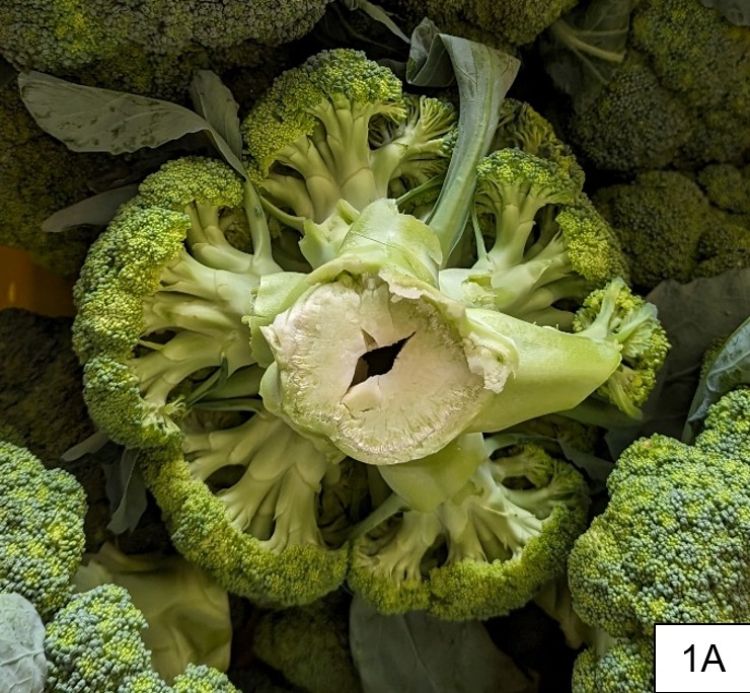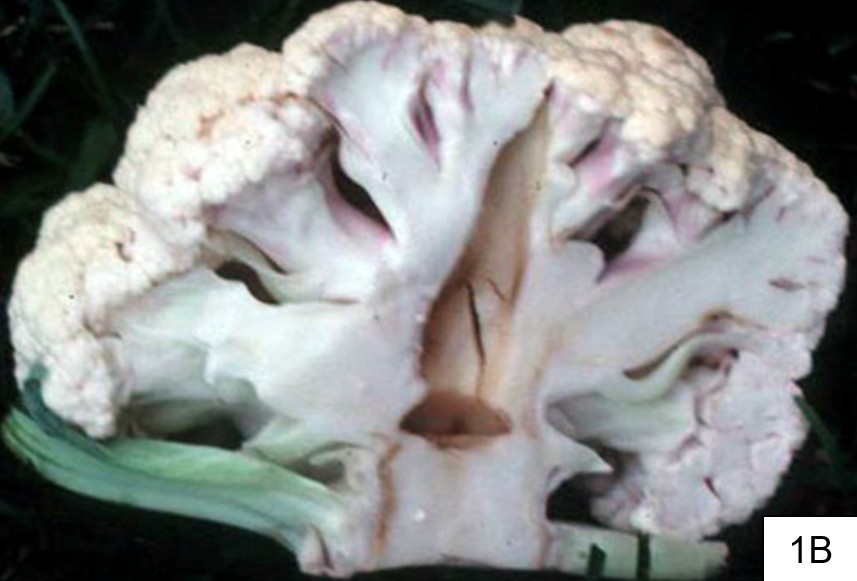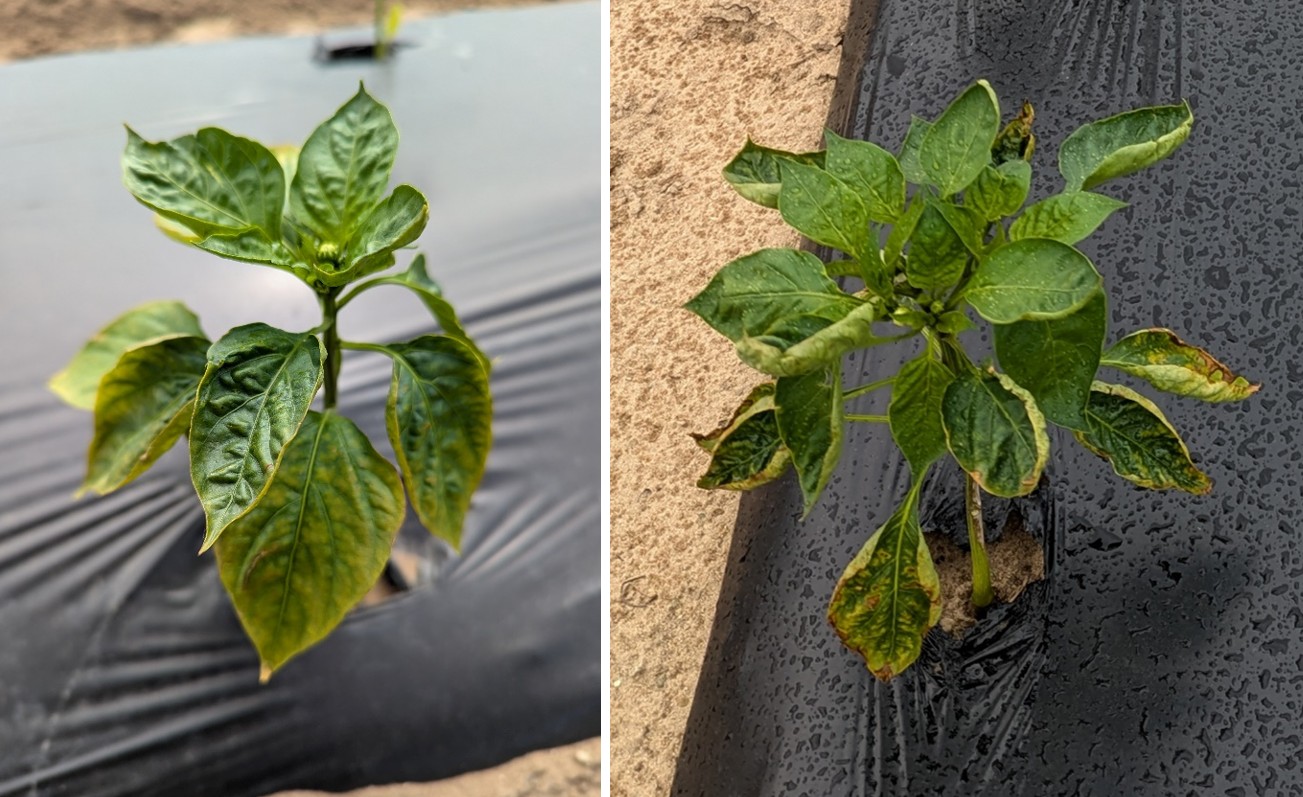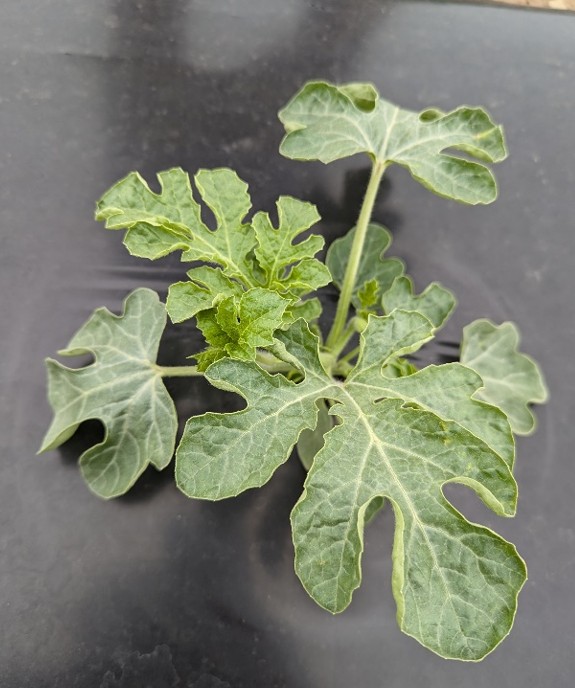Boron in vegetables: Not too little, not too much
Boron is an important micronutrient in many plant systems. However, it needs to be applied with caution.

After a plant’s macronutrient (N, P, K, Ca and Mg) needs are met, there are several micronutrients that come into play that can limit vegetable yield and quality. One of the more critical micronutrients in many cropping systems is boron (B). Boron is important in protein synthesis; seed and cell wall formation; pollen grain germination and pollen tube growth and, therefore, fruit set and yield; regulation of carbohydrate metabolism; and sugar translocation. Boron is also quite soluble and can be readily leached from the root zone, especially on sandy soils commonly used for production of many vegetables in Michigan.
Care must be taken because B is required in relatively small quantities by plants, and the difference between a beneficial rate and a toxic rate can be small. Vegetables vary considerably in their responsiveness and sensitivity to B applications (Table 1), with those requiring high levels having quite dramatic deficiency symptoms without sufficient B supply, and those with lower requirements having equally dramatic toxicity responses when B is applied in excess.
Table 1. Relative responsiveness of select vegetables to applied boron.
|
Crop |
Boron Responsiveness1 |
|---|---|
|
Asparagus |
Low |
|
Broccoli |
High |
|
Cabbage |
Medium |
|
Carrot |
High |
|
Cauliflower |
High |
|
Celery |
High |
|
Cucumber |
Low |
|
Lettuce |
Medium |
|
Onion |
Low |
|
Parsnip |
High |
|
Peas |
Low - Sensitive2 |
|
Pepper |
Low |
|
Radish |
Medium |
|
Snap beans |
Low - Sensitive |
|
Spinach |
Medium |
|
Sweet Corn |
Medium |
|
Table Beet |
High |
|
Tomato |
High |
|
Turnip |
High |
1 Highly responsive crops will often respond to micronutrient additions if the nutrient concentration in the soil is low. Medium responsive crops are less likely to respond, and low responsive crops do not usually respond to fertilizer additions even at the lowest soil micronutrient levels. Typical recommended boron rates (soil application) based on crop responsiveness: High: 2-3 pounds per acre; Medium: 1-2 pounds per acre; Low: 0.5-1 pounds per acre.
2 Boron should not be applied, soil or foliar, to sensitive crops such as beans and peas.
Table adapted from “Nutrient Recommendations for Vegetable Crops in Michigan,” MSU Extension bulletin E2934.
Managing boron deficiency
Boron deficiency symptoms in responsive crops may express as necrosis or shortening of growing points, twisted yellow or reddish-brown foliage, and a stunted or rosette appearance. Members of the cabbage family will often develop hollow stems sometimes with discoloring, although this condition can also be exacerbated by rapid growth (Figures 1A and 1B). Internal tissues of beets, turnips, rutabagas and other responsive root crops can develop hollow sections, corky tissue and discoloration in their roots. In celery, boron deficiency can lead to brown lateral cracks along stems, and in tomato, insufficient boron may increase shoulder checking.

By the time deficiency symptoms are observed, significant economic damage may have already occurred. Therefore, good boron fertility management is critical.
Michigan State University Extension boron recommendations are based on crop response rather than soil test level. This is in part because boron can readily leach from sandy soils, so availability can vary substantially over a season. However, adding a boron analysis to your soil test can provide a general guide as to whether levels are low (less than 0.7 ppm), marginal or adequate (more than 1.0 ppm).
Boron can be supplied through either soil or foliar applications. Growers can annually apply the recommended amount as a pre-plant broadcast application typically ranging from 0.5 to 3 pounds per acre depending on vegetable responsiveness (Table 1). Crop-specific recommendations can be found in MSU Extension Bulletin E2934 or through the MSU Fertilizer Recommendation Program.
Given that such small amounts of B are generally needed, granular B products should be well blended with broadcast N-P-K fertilizer to ensure adequate uniformity. Care should be taken if banding boron fertilizer with starter due to greater risk of toxicity. Foliar applications can also be effective in alleviating boron deficiency or meeting crop demand. Recommended foliar rates are reduced to 0.1-0.3 pounds per acre actual boron and may be delivered across multiple sprays.
Managing boron toxicity
Boron toxicity can occur when plants are exposed to boron levels higher than they can tolerate. While excessive boron content in soils and irrigation water can be a challenge in other parts of the United States and world, this is rarely the case in Michigan. When boron toxicities are observed in our region, the culprit is most often related to human error in boron fertilizer application, i.e., applying too high a rate often due to miscalculations, application mistakes or improper blending of a custom fertilizer.
Different vegetables—and even vegetable varieties—vary in their sensitivity to high levels of boron, often inversely related to their responsiveness. Toxicity symptoms include leaf cupping (Figures 2 and 3); yellowing, interveinal chlorosis and progressive scorching of leaf tips; brown dead lesions on the margin of the leaves; and ultimately defoliation of the oldest leaves (Figures 2 and 4.). Fruit may become misshapen, and productivity can decline. The plant may become stunted, and stems can crack or become corky. Severely affected plants can die. Beans are among the most sensitive vegetables to boron toxicity, but at high enough levels (especially associated with overapplication of boron fertilizers on sandy soils) severe symptoms can be apparent on many vegetables.



If you suspect boron toxicity due to a fertilizer misapplication, what can you do?
Submit a plant tissue sample for analysis to confirm boron toxicity is the likely cause. On average, boron concentrations in mature leaf tissue greater than 200 parts per million (ppm) are excessive and potentially toxic, while levels between 20-100 ppm are considered sufficient. Soil samples may be less informative due to spatial variation and boron leaching, but toxicities may appear at 5 ppm available boron for some crops. Keep in mind these are general ranges, and a number of soil, crop and environmental factors can interact to determine actual toxicity.
Leaching the soil with sufficient (presumably low boron) irrigation water is the most effective strategy to reduce toxic levels of boron in the root zone. Soil type and drainage will determine acceptable irrigation quantities and durations. Keep in mind this will leach other important mobile nutrients as well (especially nitrogen and on some soils potassium), which will need to be resupplied to avoid other deficiencies in the crop.
High levels of calcium in the soil and plant may increase boron tolerance. There is limited evidence that soil and/or foliar applied calcium (and other nutrients) may provide modest supplementary benefits for some crops under boron toxicity conditions, but this should not be considered a reliable substitute for soil remediation (i.e., leaching). Liming to recommended pH is also an important longer-term amelioration strategy if soil pH is low.
Since boron readily leaches or is adsorbed in soils, an overapplication in one season is unlikely to impact crops the following year under open field conditions.
Additional resources
- Nutrient Recommendations for Vegetable Crops in Michigan, MSU Extension bulletin E2934
- Secondary and Micronutrients for Vegetables and Field Crops, MSU Extension bulletin E-486
- Boron and Molybdenum in Vegetable Crops, University of Delaware Cooperative Extension
This work is supported by the Crop Protection and Pest Management Program [grant no 2024-70006-43569] from the USDA National Institute of Food and Agriculture. Any opinions, findings, conclusions, or recommendations expressed in this publication are those of the author(s) and do not necessarily reflect the view of the U.S. Department of Agriculture.



 Print
Print Email
Email

